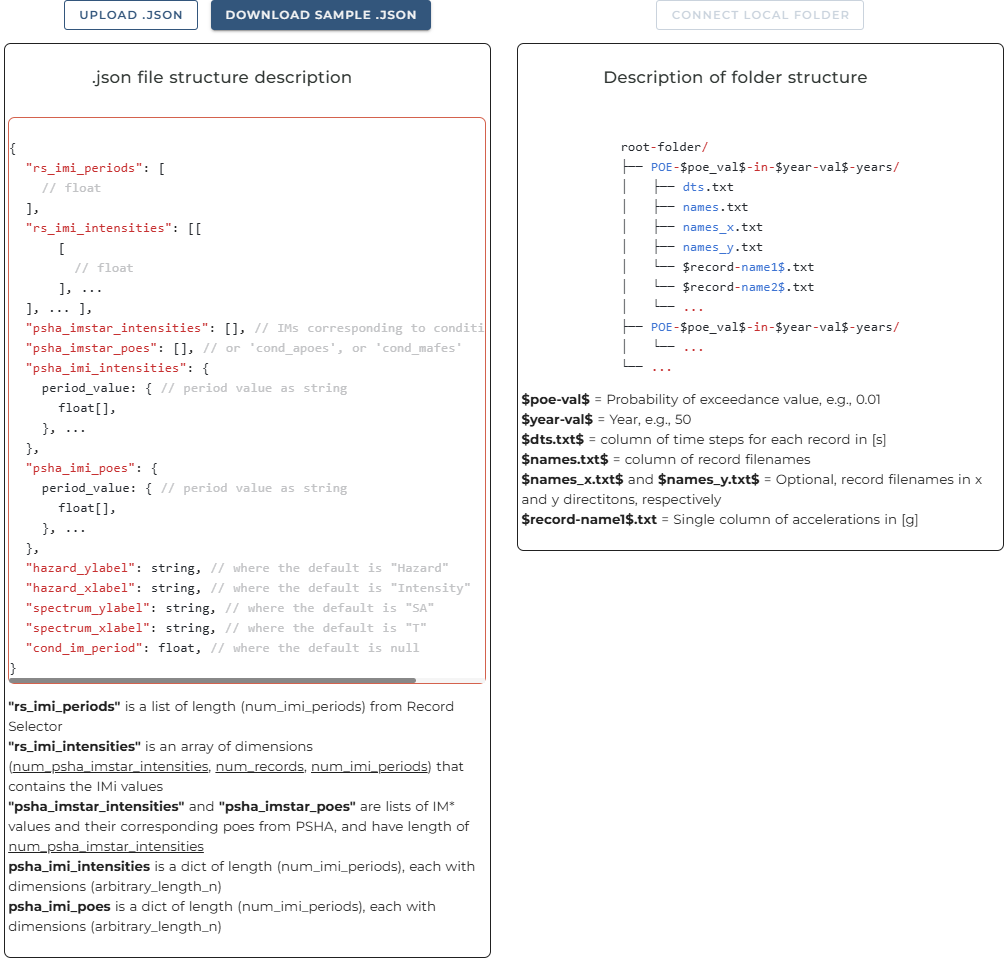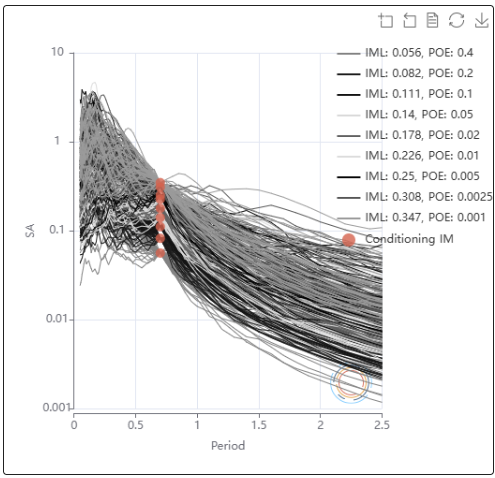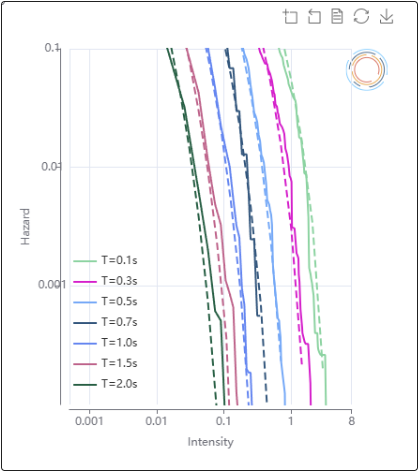Hazard Consistency of Selected Ground Motion Record Suite
Apr 20, 2025
What is Hazard Consistency and Why Do We Need It?
One key parameter for assessing the suitability of a ground motion record set is its hazard consistency, as described by Lin et al. (2013) for the case of spectral acceleration.
Before starting the discussion on hazard consistency, we are going to assume that the reader is familiar with record selection and has selected a ground motion record suite for intensity levels of interest. If the reader is not sure, they are welcome to check out the blogs on record selections using conditional selection, as well as unconditional selection. Additionally, for more code-based selections, the reader is invited to read the blog on code-based selection. Finally, we invite you to try out the record selector app by logging in as a guest at the Djura Platform.
The most fundamental validation involves confirming that selected ground motions correspond with the target intensity measure (IM). This procedure evaluates whether the exceedance rates of various intensity measures align with site-specific conditions, as established through probabilistic seismic hazard analysis (PSHA). The system functions by computing the implied hazard curves from your selected ground motion records across different intensity levels (annual exceedance probabilities) and contrasting these with the actual PSHA hazard curves. This verification ensures your complete ground motion record set accurately represents the site-specific seismic hazard characteristics. However, genuine hazard consistency extends considerably beyond a single IM, requiring agreement across multiple additional IMs. For conditional spectrum applications, this necessitates evaluating spectral values beyond the conditional period, whilst also incorporating various period-independent IMs. By ensuring consistency across multiple IMs, the selected records better capture the hazard characteristics of the site.
By confirming the consistency of ground motions, particularly when selected based on a specific period value (T), the system guarantees that risk estimates remain consistent regardless of which conditioning period is chosen. This provides analysts greater flexibility in defining conditioning periods and selecting appropriate ground motions whilst maintaining precision and reliability in the resulting analyses.
Now let's see how one can check the hazard consistency of their selected ground motion record suite!
Input Data Structure
At Djura, we have developed a specialised software tool that performs comprehensive hazard consistency checks on your behalf. The primary task for users involves formatting their input data to meet the requirements of Djura's hazard consistency tool. For analysts who have utilised Djura's record selector tool for their selections, they can seamlessly integrate these outputs to create the appropriate input for the hazard consistency application.
Currently, there is one way to provide your input the software. We plan to integrate the second approach on the right during the lifespan of the software to make the integration easier.
We provide you with a .json file sample that you may download and reupload to check out the tool. It also acts a sample that you can base your own input formatting on to ensure compatibility. The input keys include:
- Record spectra (rs) intensity measure (imi) periods, intensity values (accelerations in g)
- PSHA conditional intensity measure (imstar) intensities and probabilities of exceedances (poes)
- PSHA imi intensities and poes
- Additionally, you may provide the tool some labels which will be used for visualising the plots. Those are not required parameters, so you may ignore them
Now, let's download the sample file and reupload it to run the verification.

Visualising the Results
Once, we reupload the file, we will notice that below the input descriptions a new figure appears. This figure plots the selected ground motion record spectra of each intensity measure level. As you see based on the orange dots, the conditioning spectral acceleration is at 0.7s. Here, the records have no dispersion for each intensity level, they all align perfectly at the conditioning period. You may interact with the figure, for example, you may zoom in on the figure as shown on the right.


Since, everything looks ok, we can run the analysis by clicking the orange button on the top right side of the screen.

Once, the verification is complete, a new figure will appear demonstrating the hazard consistency plot associated with the input selected record spectra. Here, we plot hazards associated with spectral accelerations at several periods. As you may note, the verification demonstrates that the selected records are consistent with the hazards obtained through PSHA (the corresponding curves are color-coded).

If you’d like to keep a copy of your results, you can download the outputs of your verification by clicking the download button, also found at the top right-hand side of the screen.

It is crucial to recognise that achieving hazard consistency presents significant challenges, as it depends upon numerous factors. These include the choice between approximate versus exact conditioning of target spectra, the validity of assuming correlation models are independent of rupture and ground motion models, and the inherent discrepancies between selected ground motion records and the intended target during selection. Whilst relaxing any of these criteria undoubtedly simplifies and expedites the identification of suitable records, these seemingly minor deviations from the "true" hazard can accumulate and may become collectively apparent during hazard consistency verification.
Conclusion
Summary
This post described what is hazard consistency and why we need them. Also, it was shown how the hazard consistency verification may be performed using one of the tools in the Djura platform.
Future Updates
We have tested this and are adding more features and flexibility so please let us know if you have specific needs. The goal is to add more intuitivity when inserting the input data. If you have any suggestions, get in touch with us, and we will implement them.
This tool will also be callable via API directly from Python or Matlab from your local machine so when you get comfortable, you can integrate this tool directly within your workflow with a single command.
Stay Tuned
This is just one of the applications we offer. Get in touch if we would like to use this service by visiting the website, or dropping us an email. Stay tuned for other videos and contact us for more information.
References
- T. Lin, C. B. Haselton, and J. W. Baker, “Conditional spectrum-based ground motion selection. Part I : Hazard consistency for risk-based assessments,” no. June, pp. 1847– 1865, 2013, doi: 10.1002/eqe.